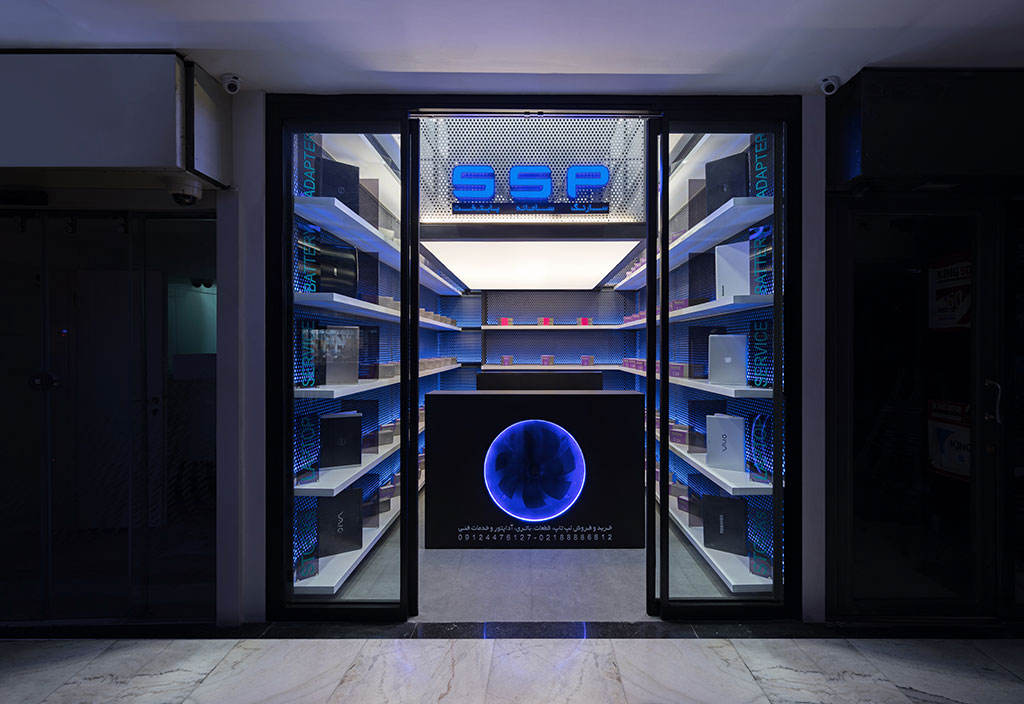

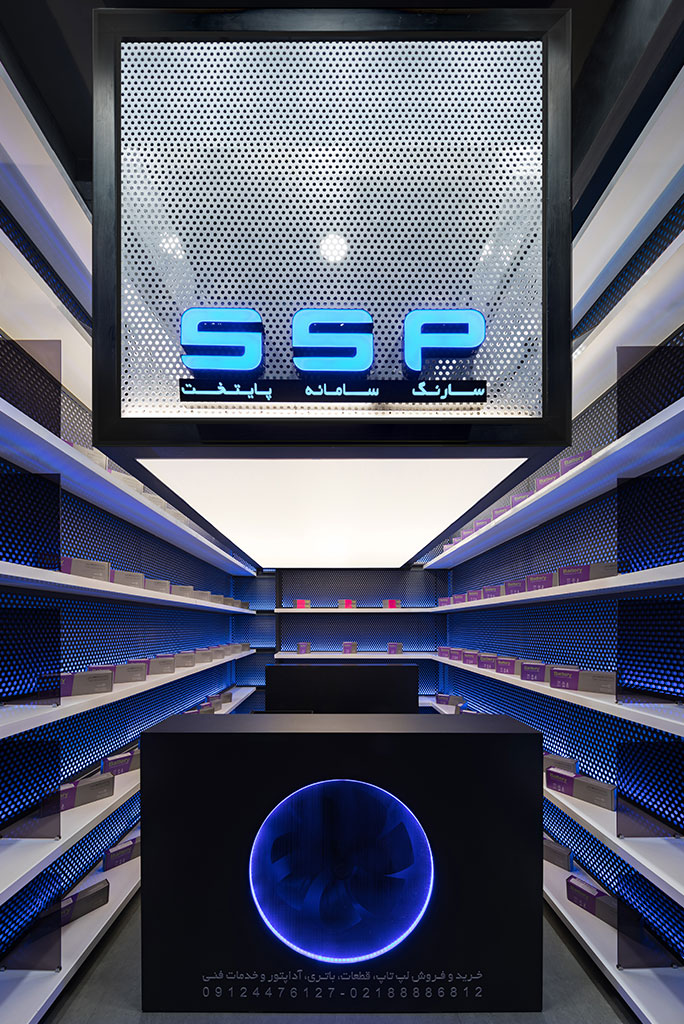

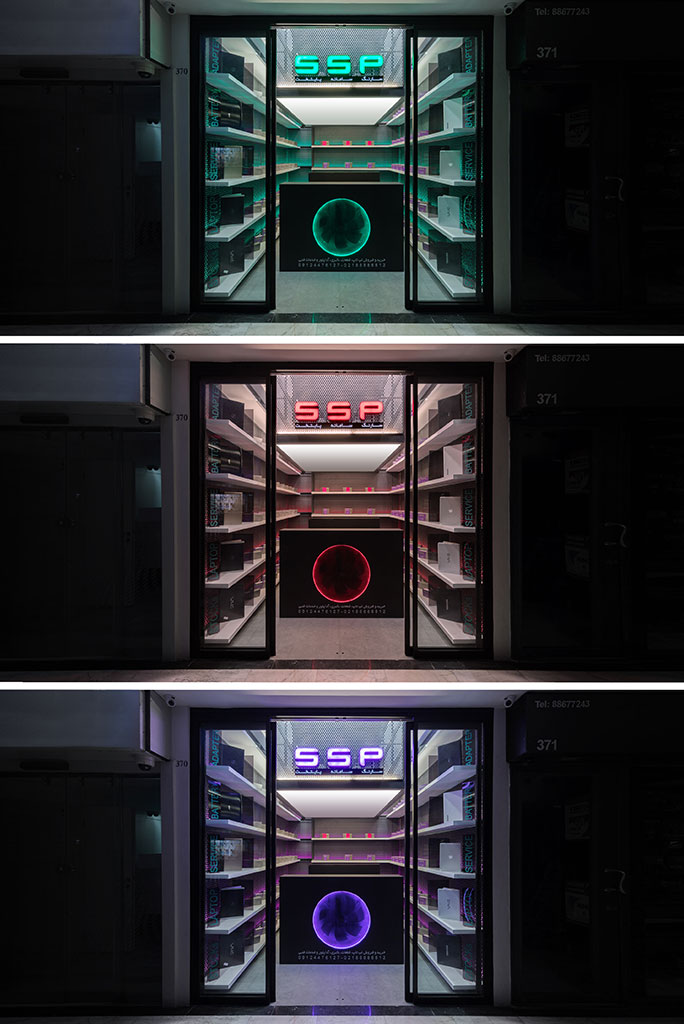
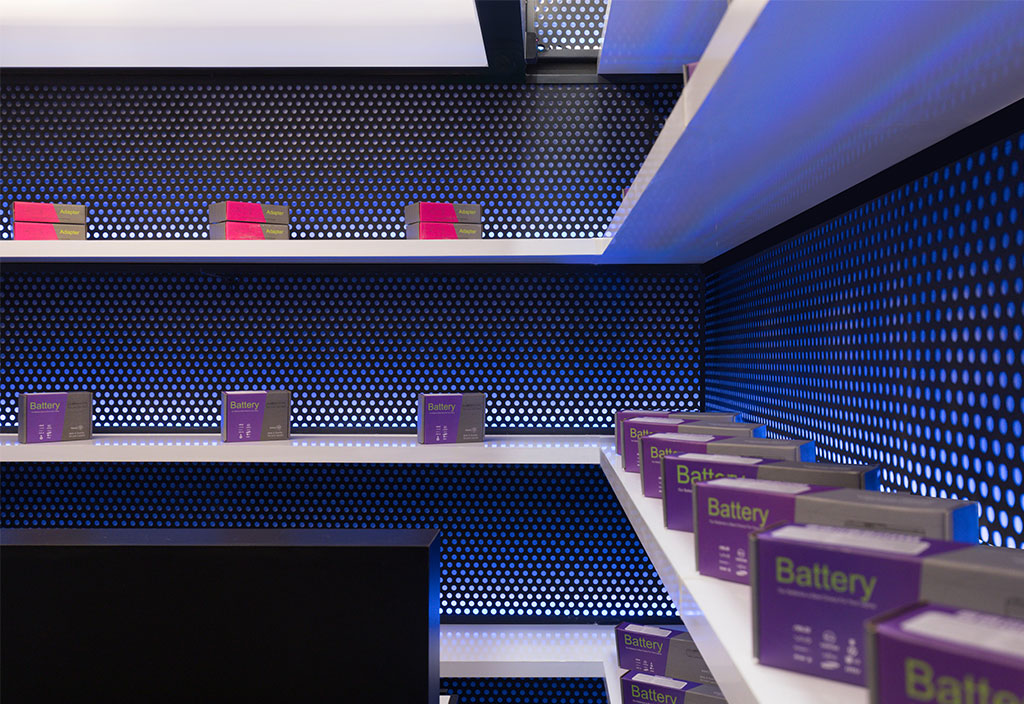
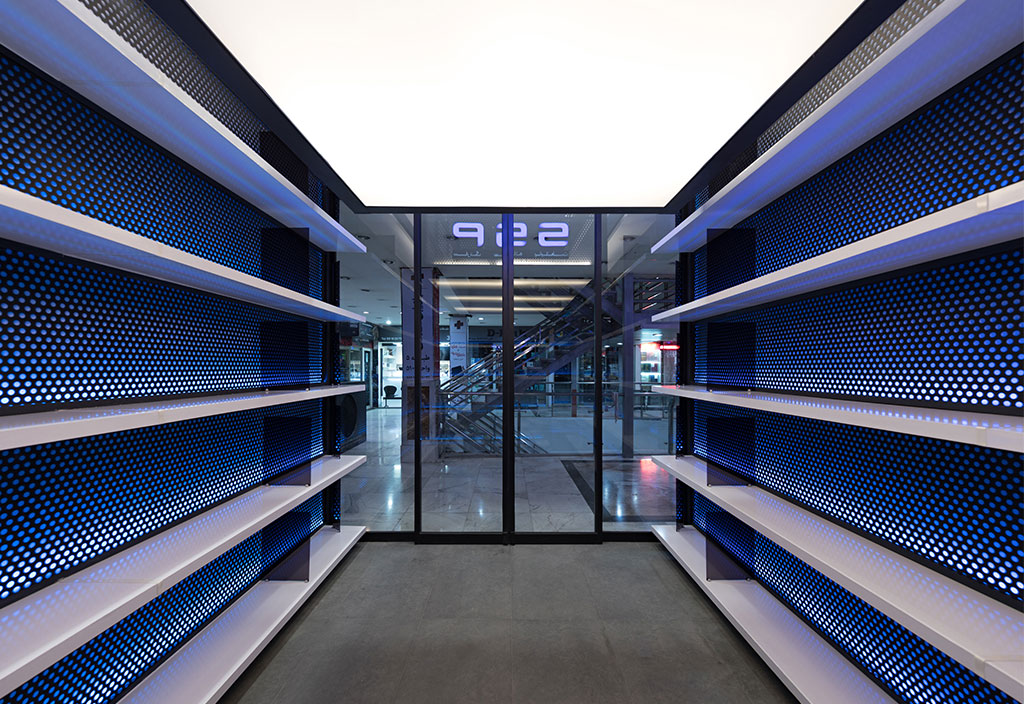
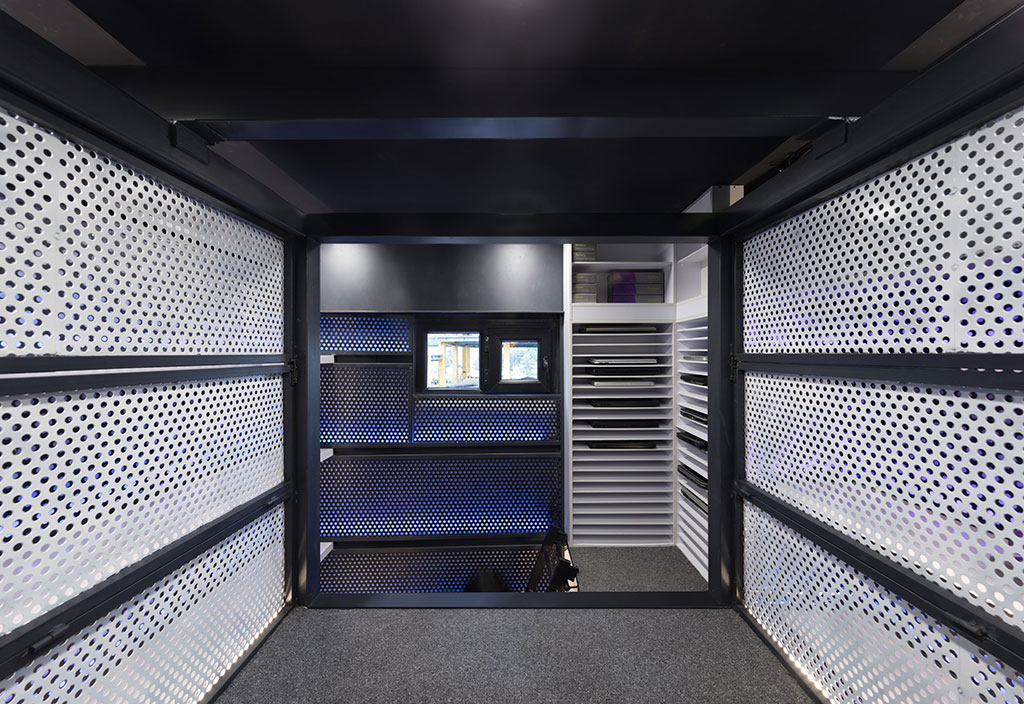

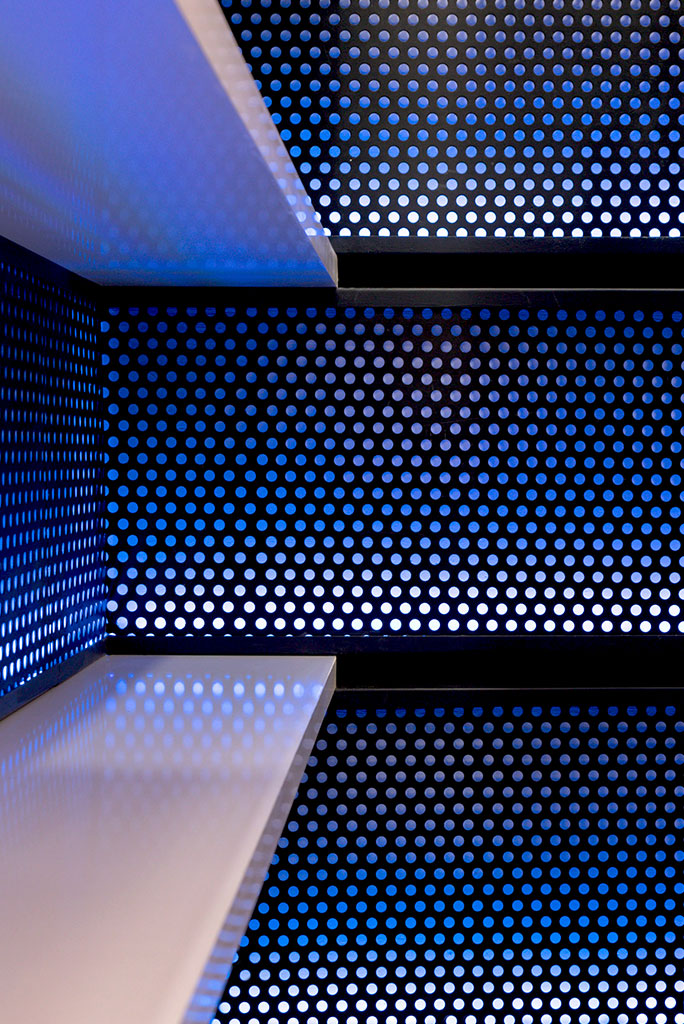
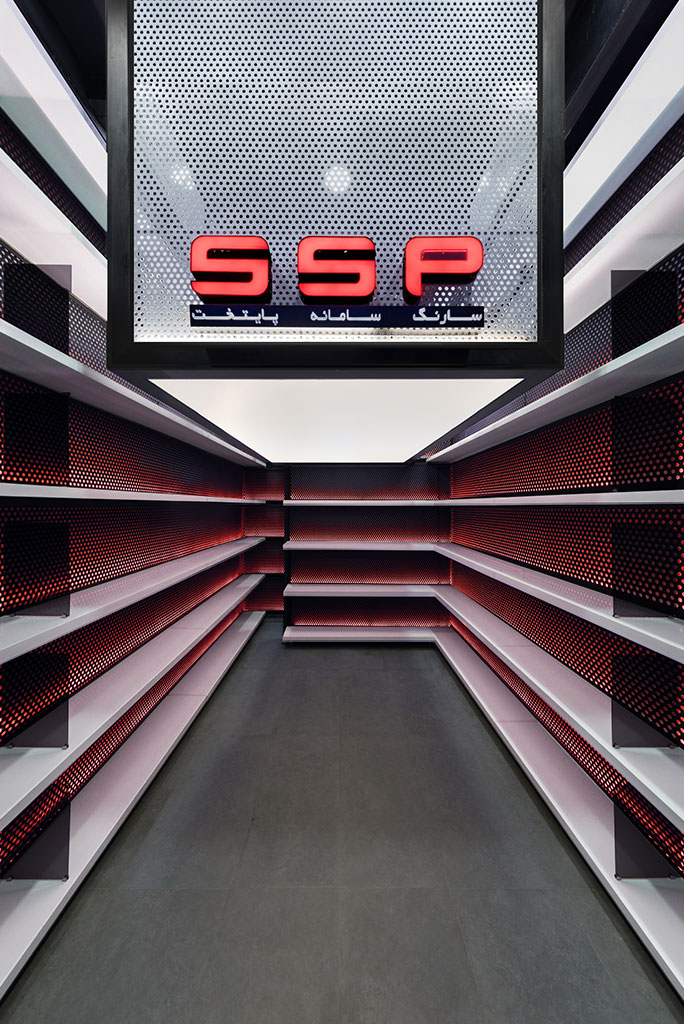
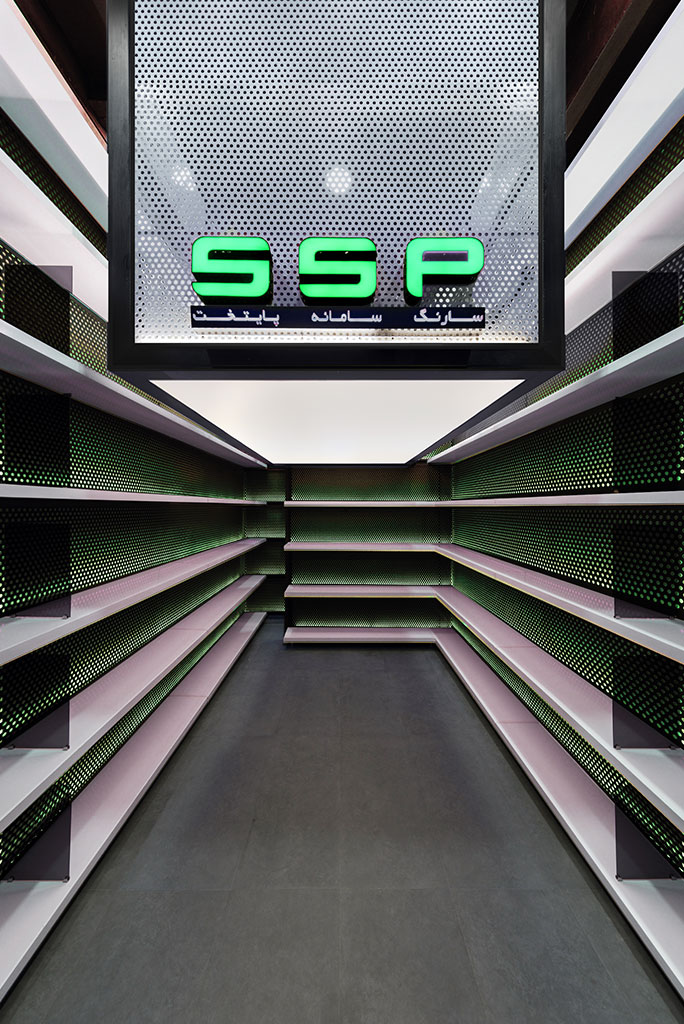
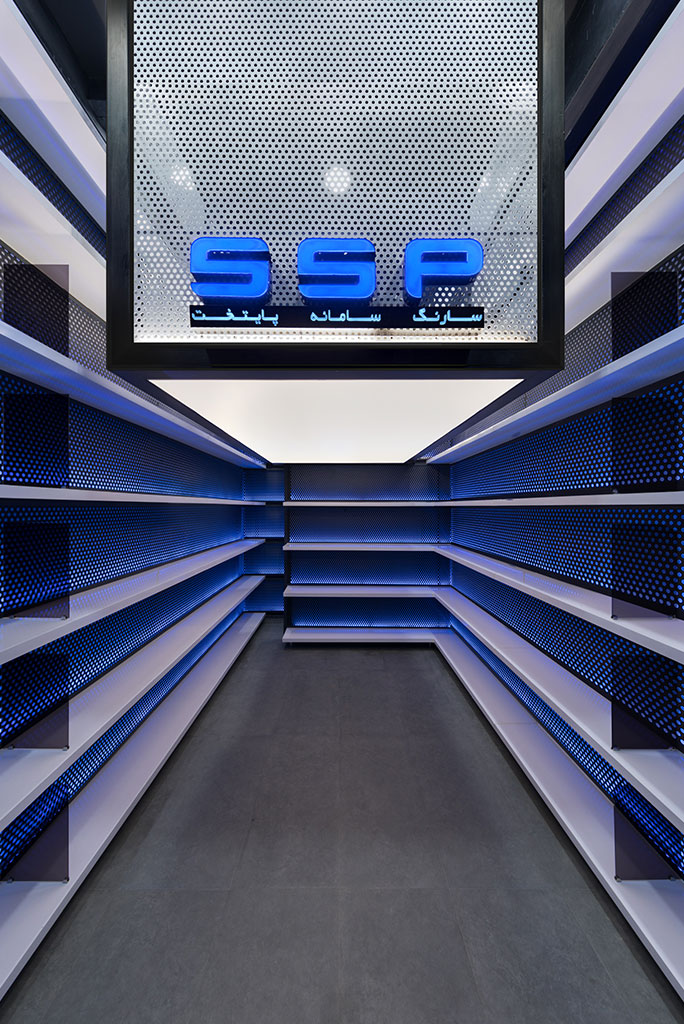
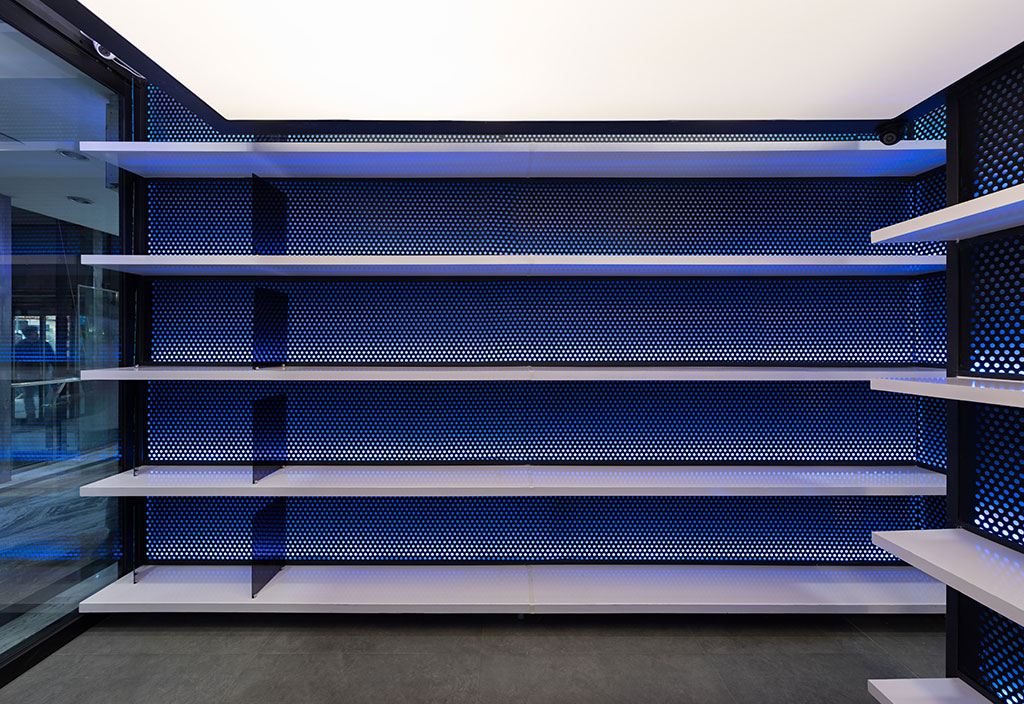
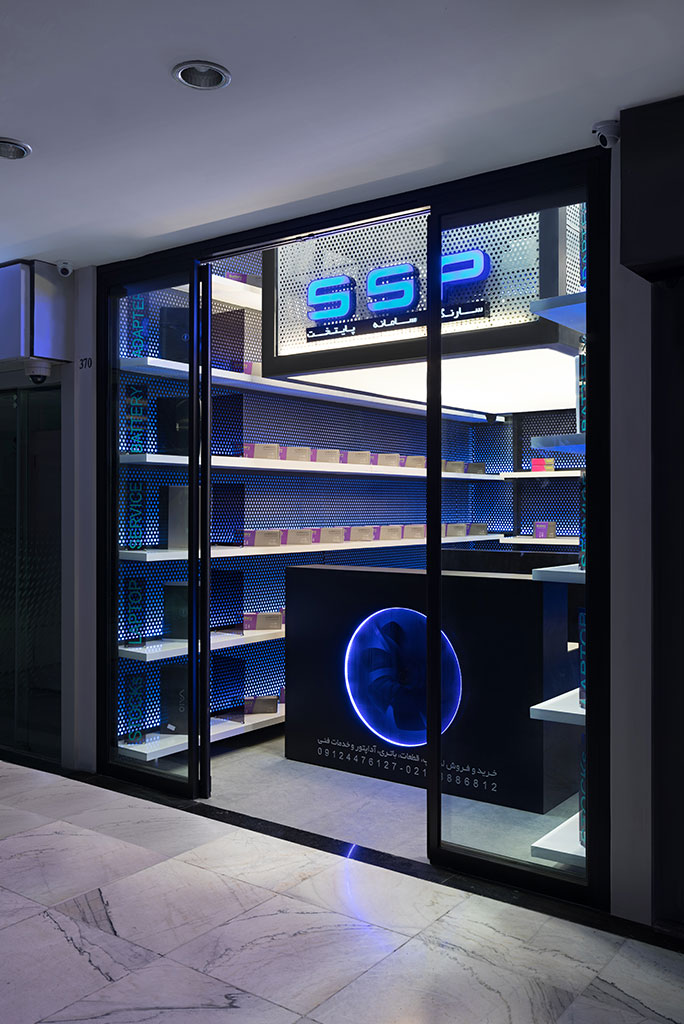
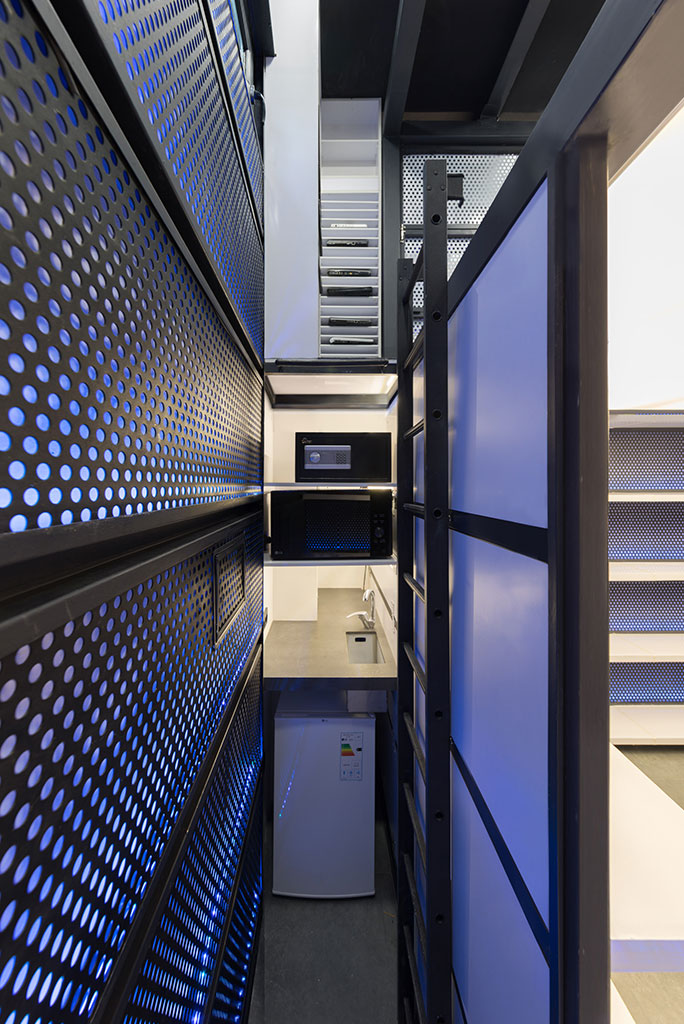

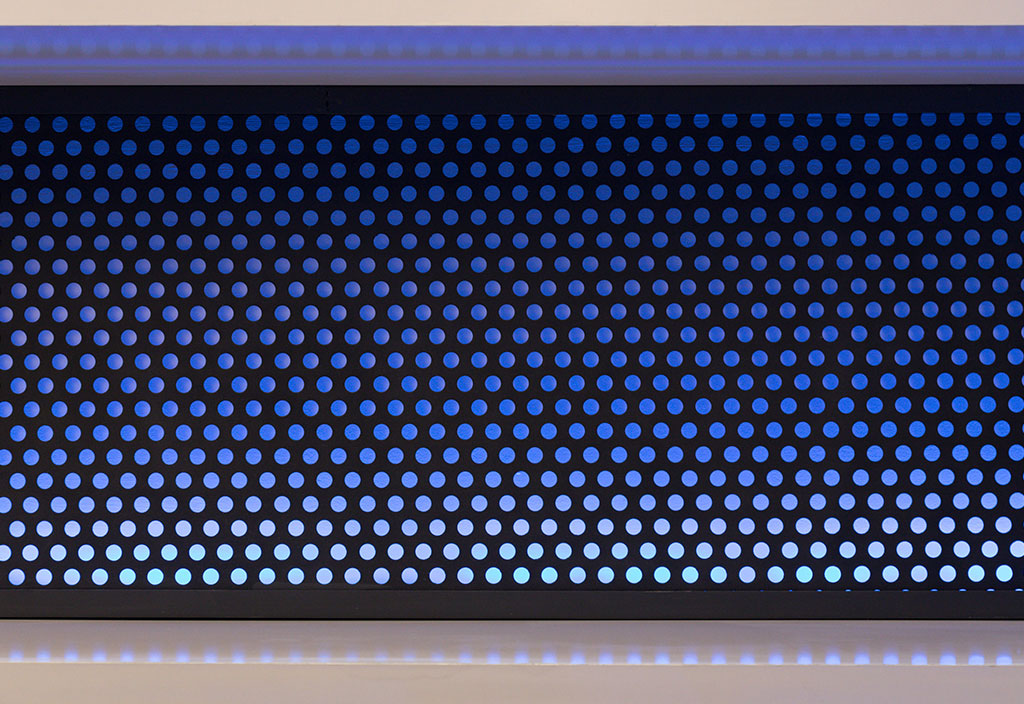
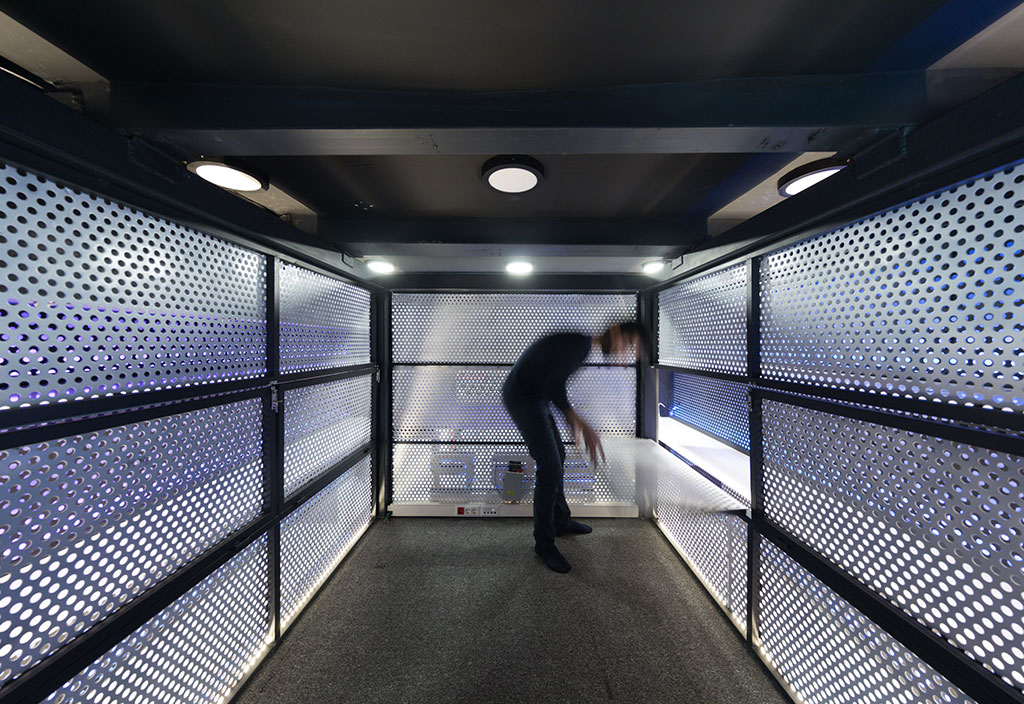
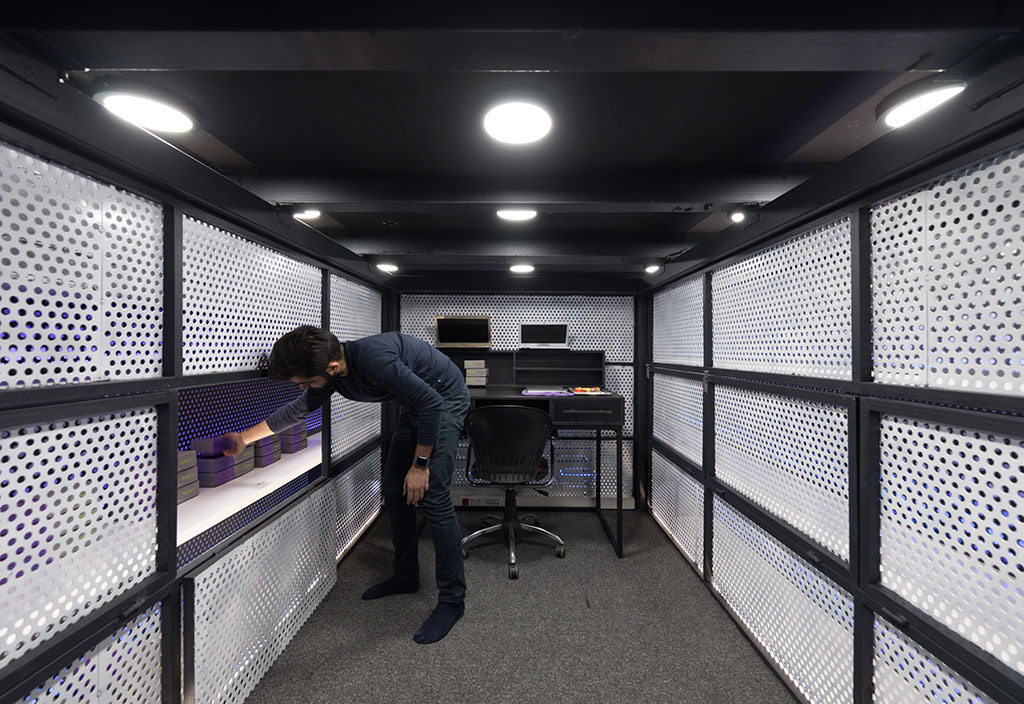
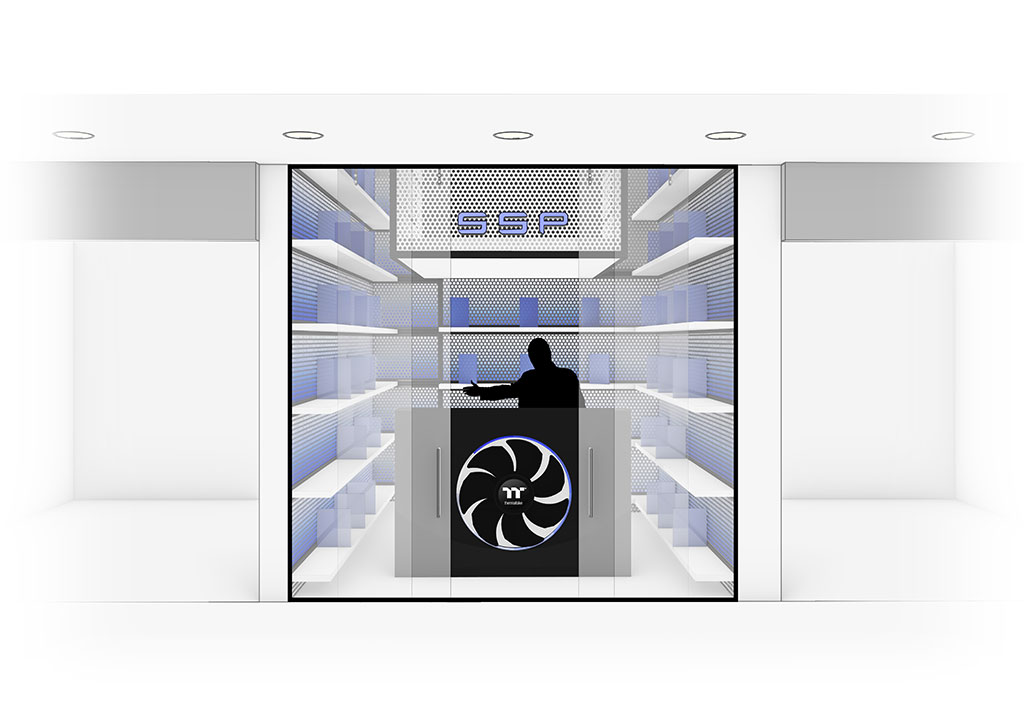
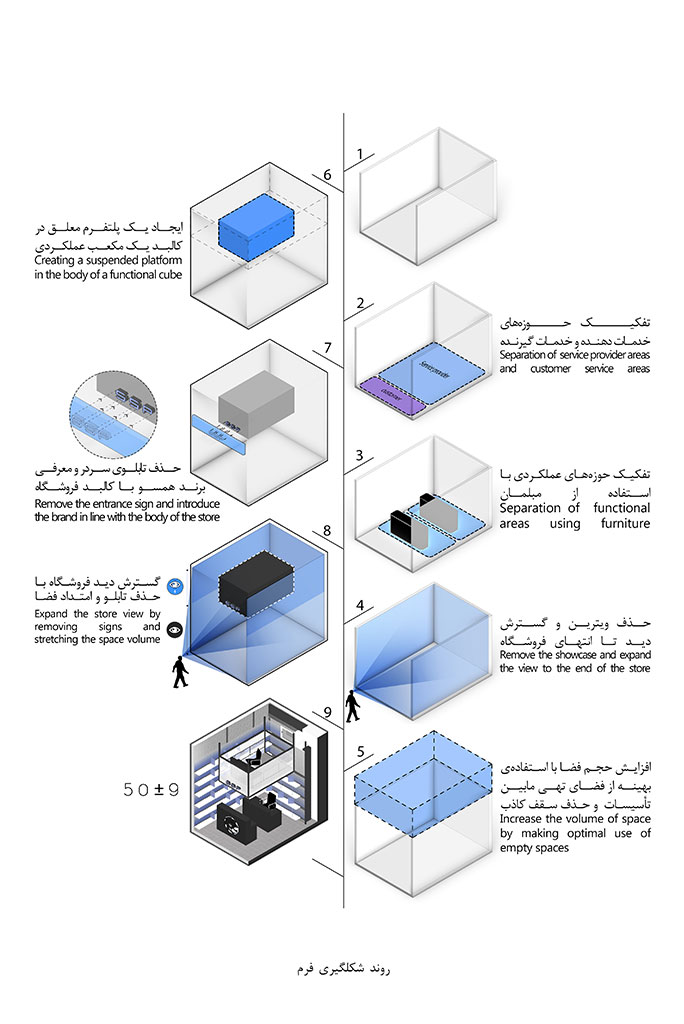

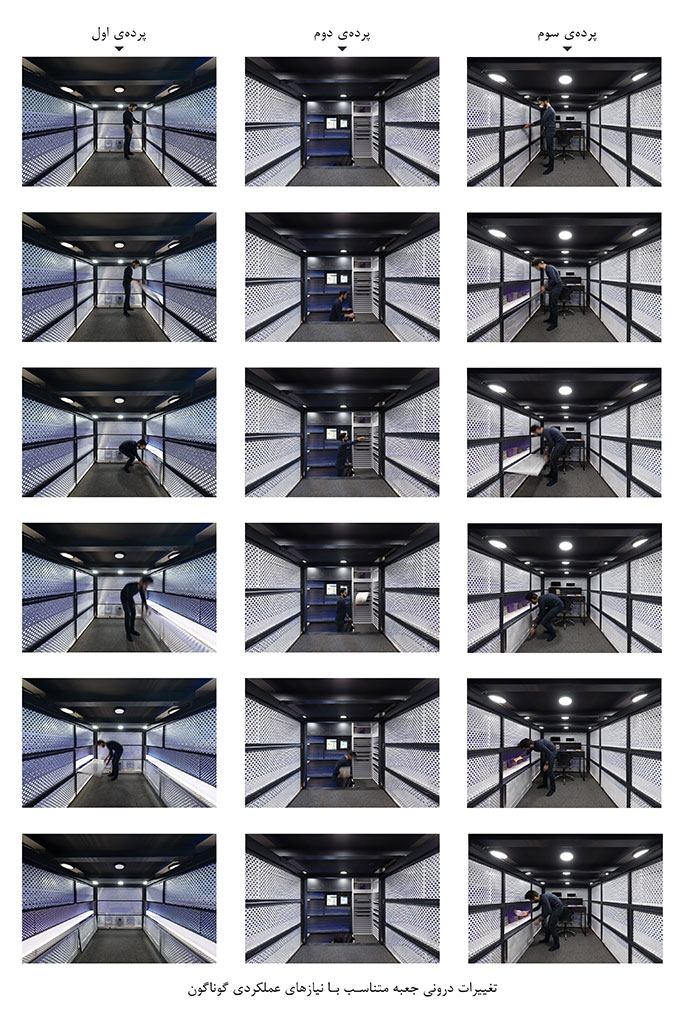
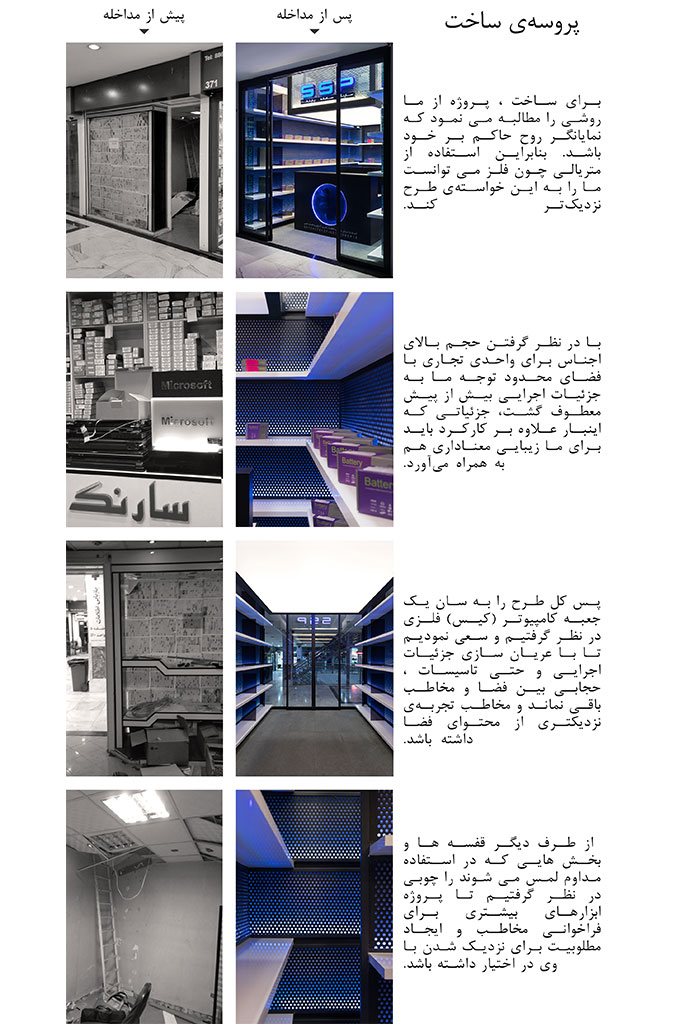
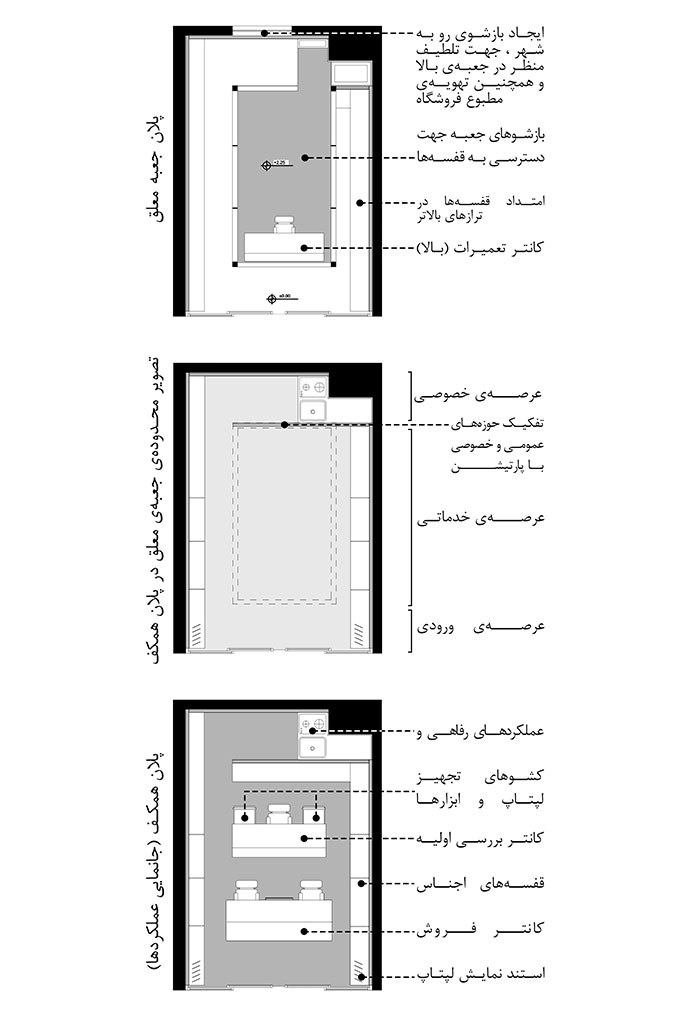


























PLUG-IN BOX
Tehran | Paytakht Computer Complex | 2019
1- Story of Paytakht:
The effects of modernism on urban spaces can be seen from certain periods in the history of Iranian cities.
The importance of this issue can be brought up when these public spaces withstand changes in surface, scale, and performance. As the capital city of Iran, Tehran has been the showcase of changes and the symbol of a modern city and is exposed to accelerated changes more than any other time.
As one of the many types of public city spaces, commercial spaces have conquested Tehran and overtaken other applications.
The method of the formation of these spaces has taken a special shape to themselves due to factors like limited space and high land prices. This project made a possible practice for us to renovate a commercial block in the Paytakht computer complex. A practice for the attraction of more customers, optimization of performance in a limited area, and introduction of the application before the entrance of the customer.
2- 50±9 (𝒎𝟑):
Increasing the quality of a limited space of the commercial block, with the motivation of taking the most benefit of the space available for more function and also being separated from commercial complex, duplicated modules turned into the main issue of this project. Our effort in this project is for changing the perspective from surface to volume, placing the available space for renewed review and using the hidden capacities to perceive a new space from the available space. Inside a space that had a volume of 50 𝑚3 was anticipated which although decreased the available space, gave an additional possibility for work and it seemed as if we added 9 𝑚3 and an area of 13 𝑚2, a suspended space of 9 𝑚3 space. The 50±9 project is rereading a common commercial diagram; the coexistence of the service provider space and the client space, which have a counter joint as a border.
50±9 was our response for store, service applications with a taste of digital products. 50±9 is the opening of one space which is itself inside another space; this new space is limited with a framework of a box and makes work and activity possible inside the available space. With the reconstruction of the form of the box, 50±9 endeavors that the digital adventures of the audience can be revived and we hope to use it to serve the main needs of the store. From outside, 50±9 is an empty space which includes a lighting hanging cube inside it and this is the first motive for the attraction of the audience.
3- Defining Boundaries:
Form, function and construction are balanced through a series of decisions. The relation between high repairs and low sales turns to the dynamic and constant body that creates the fluid space. Both at the time where the box becomes the host of customers due to its suspended nature and also at the time it provides access to the highest points of the shelf of goods. to our available space and created a 50±9 𝑚 The box conveys general lighting to the lower levels of the store using its continuous elastic panel. And also provides a separate and private work space for services and repairs, it all serves to increase the performance of the minimal space of the store and adds to the importance of this relation.
4- Manufacturing process:
The building process demanded a method that represents the spirit. Therefore, using a material such as metal could bring us closer to this design request.
Considering the high volume of goods for a business unit with limited space, our attention was more focused on executive details, which should bring meaningful beauty to us in addition to functionality. So, we considered the whole design as a metal computer box (case) and tried so that by exposing the executive details and even the facilities, there would not be a veil between the space and the audience, and the audience would have a closer experience of the content of the space. On the other hand, we considered the shelves and parts that are touched in continuous use to be wooden, so that the project has more tools to call the audience and create convenience to get close to him.
Type: Commercial
Location: Mirdamad, Tehran, Iran
Client: Mr. Merid Meshkinian
Design team: Shahab Ahmadi, Iman Hedayati, Niloufar Mohammadzadeh, Elaheh Sadeghi, Ali Ahmadi, Mitra Mohammadi, Mohammadjawad Massoumisangani
Construction: Hasht Architects
Electrical and Mechanical Facilities: Hasht Architects
Graphic Design: Niloufar Mohammadradeh, Ali Ahmadi, Shaghayegh Beyrami
Photo: Mohammad Hasan Etefagh
Area: 13 square meters
Status: Built
Date: August 2019